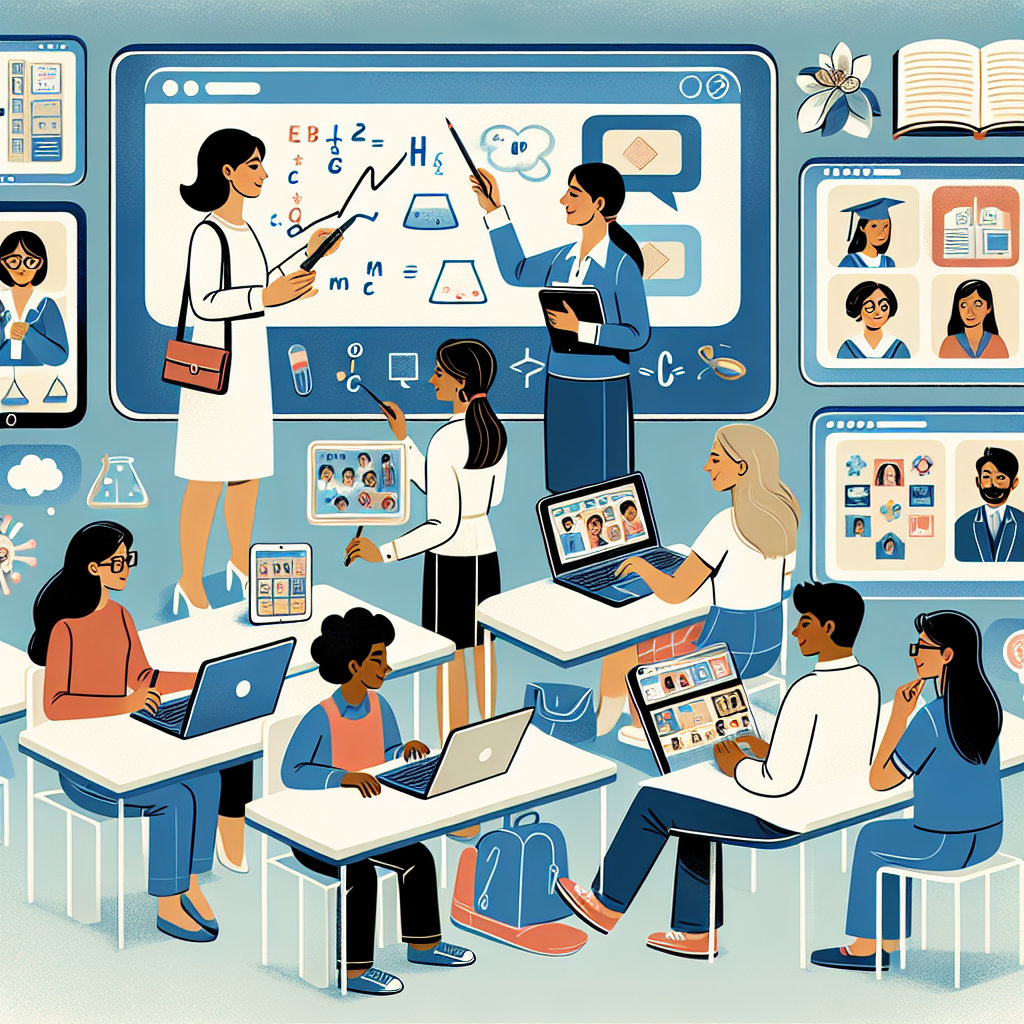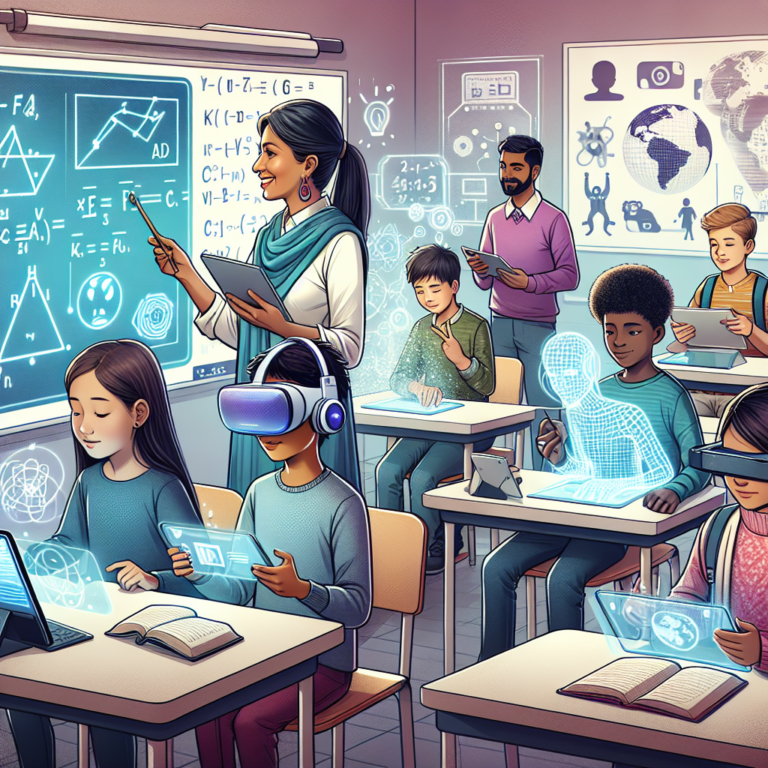Top Educational Technology Tools for Teachers
In the ever-evolving world of education, technology has become an integral component in the classroom and beyond. For educators, keeping up with the latest and greatest in educational technology can be both exciting and overwhelming. Whether you’re navigating the shift to remote learning or seeking new ways to enhance your in-person lessons, the right tools can make all the difference. This article will introduce you to some of the top educational technology tools that are transforming the way teachers teach and students learn.
The Rise of Educational Technology in Teaching
Educational technology, often referred to as EdTech, encompasses a broad range of services and products designed to enhance learning outcomes and simplify the teaching process. From interactive whiteboards to online learning platforms, technology is a powerful ally for educators around the globe. Integrating these tools into teaching not only supports student engagement but also prepares them for a technology-driven future.
Bridging the Gap: Remote Learning and Beyond
The recent push towards remote learning has been a catalyst for the widespread adoption of educational technology. Top remote educational technology companies have risen to the occasion, offering solutions that bridge the physical gap between students and teachers. These platforms have become crucial in maintaining the continuity of education during unprecedented times.
A Closer Look at Top Educational Technology Tools
Educators have a multitude of tools at their disposal. Let’s dive into some top picks that have gained popularity among teachers for their effectiveness and ease of use.
Interactive Learning Platforms
Interactive learning platforms such as Kahoot! and Quizlet engage students through gamified learning experiences. Teachers can create quizzes, flashcards, and games that make learning fun and interactive. These platforms often come with analytics, giving educators insights into student performance and areas that may need additional focus.
Comprehensive Learning Management Systems (LMS)
Learning Management Systems like Canvas and Blackboard provide a centralized platform for managing course content, grades, and communication with students. They offer a range of features, including assignment submission, discussion boards, and integrated multimedia tools, facilitating a seamless learning experience whether in the classroom or remote.
Virtual Classrooms and Video Conferencing
Tools such as Zoom and Google Meet have become staples in the virtual classroom. They allow for real-time video interaction, replicating the face-to-face classroom experience to a certain extent. Features like breakout rooms, screen sharing, and virtual hand-raising help in maintaining classroom dynamics and encouraging student participation.
Digital Whiteboards and Annotation Tools
Digital whiteboards like Miro and Jamboard enable educators to present ideas and concepts visually. These tools support collaborative learning, allowing students to contribute to the board in real-time, making it easier to work on group projects or brainstorming sessions, regardless of physical location.
Integrating Educational Technology into Teaching
Integrating educational technology into your teaching practice can be transformative. Here are some tips to ensure a smooth integration:
Start Small and Scale
Begin by incorporating one or two tools that address specific teaching challenges or goals. As you and your students become more comfortable, you can gradually introduce additional technologies.
Focus on Training and Professional Development
Take advantage of training sessions and professional development opportunities offered by EdTech companies. Staying informed about the features and best practices of each tool will help you maximize their potential.
Encourage Collaboration and Feedback
Collaborate with other educators to share experiences and strategies for using technology in the classroom. Additionally, seek feedback from your students to understand how these tools impact their learning experience.
Align Technology with Curriculum Goals
Ensure that any technology you adopt aligns with your curriculum goals and enhances the learning objectives. The aim is to complement and support your teaching, not distract from it.
Challenges and Considerations
While educational technology offers numerous benefits, there are challenges to consider:
Accessibility and Equity
Not all students have equal access to technology or the internet. It’s crucial to ensure that the tools you use do not exacerbate existing inequalities among your students.
Data Privacy and Security
Be mindful of data privacy and security when using EdTech tools. Choose reputable companies that comply with educational data protection regulations.
Keeping Up with Changes
The EdTech landscape is constantly changing. Staying current with new tools and updates can be time-consuming, but it’s essential for providing the best possible education to your students.
Real-World Examples of Educational Technology in Action
Let’s look at how some educational technology tools have been implemented successfully in the classroom:
Flipgrid: Empowering Student Voice
Flipgrid is a video discussion platform that allows students to share their thoughts and ideas through short videos. It’s particularly effective in encouraging participation from students who may be shy or reluctant to speak up in a traditional classroom setting.
Padlet: Collaborative Learning Made Easy
Padlet offers a virtual bulletin board where students can post notes, images, links, and videos. It’s an excellent tool for collaborative projects, brainstorming, and sharing resources in a visually engaging way.
The Future of Educational Technology
As we look to the future, the role of technology in education is only set to grow. Virtual reality (VR), augmented reality (AR), and artificial intelligence (AI) are on the horizon, promising even more immersive and personalized learning experiences.
Conclusion
Educational technology tools offer an array of benefits that can revolutionize teaching and learning. By carefully selecting and integrating the right tools into your teaching practice, you can enhance student engagement, streamline administrative tasks, and ultimately, improve educational outcomes. As you embark on your EdTech journey, remember to keep your students’ needs at the forefront, ensuring that technology serves as a bridge to knowledge, not a barrier.










